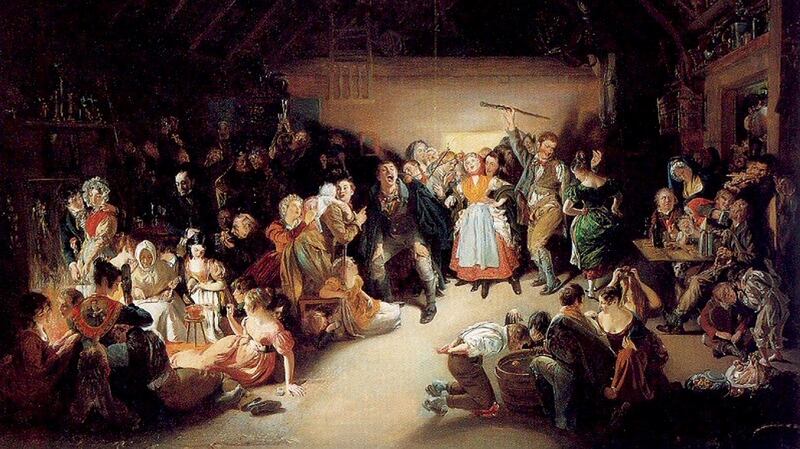According to an infographic on US candy habits around Halloween, kids would need to trick or treat for 180 miles, or about 60 hours, to burn off what they eat. Judging by the bags held forward by the kids at Irish doors each year, a similarly active route might be needed for Irish trick-or-treaters to work off their stash of goodies. Are the bags getting bigger or are the kids getting smaller?
It’s kind of funny to think how Halloween has been repackaged and reimported to us from the US as a sweet-focused occasion, seeing as we were the ones who reportedly invented many of the Halloween traditions that are around today.
Superstitious suspicion
It's only in the past two decades that Halloween in Ireland has become associated with sweets and trick-or-treating. There was a time when people in Ireland viewed trick-or-treating with superstitious suspicion. Perhaps that scepticism was a hangover from a time when Samhain celebrations to mark the Celtic New Year included the idea that dead souls walked among us – an idea which has lost a bit of its bite over the years as Halloween became marketed to children.

A piece in The Atlantic from 2010 talks about trick-or-treating in the US in the 1940s, but it wasn't until the 1950s and beyond, that candy companies really cottoned on to Halloween as the potential for marketing, just like Christmas and Easter.
Long before that, the Neolithic passage tomb at the Hill of Tara was aligned with the Samhain sunrise in the autumn equinox. Somewhere along the way, the traditions of Samhain, such as dressing up in costumes and reciting songs in exchange for food or good fortune, became merged with the Christian All Saints’ Day to create Halloween.
Perhaps the most widely internationally recognised symbol of Halloween that Ireland can claim is the jack-o-lantern. On display in the Museum of Country Life in Castlebar, Co Mayo, is a jack-o’-lantern made from a turnip, dating from the 19th century. Turnips were the traditional choice of vegetable for carving Halloween lanterns. The origins of the jack-o’-lantern is thought to be in the myth of Stingy Jack, who spent a good deal of life tricking the Devil out of stealing his soul.
When he finally died, Jack was neither welcome in heaven or hell so the Devil banished him to wander the Earth for eternity, with only a carved-out turnip lit with coals for guidance. The story of Stingy Jack is thought to have been brought to the US by Irish immigrants, and the turnip was replaced by the more local pumpkin.
Snap Apple
There's a long tradition of apple-bobbing, also known as Snap Apple, in Ireland, too. Cork-born 19th-century artist Daniel Maclise captured the scene of October 31st with his painting entitled Snap Apple Night, in around 1840. The painting currently hangs in Crawford Art Gallery in Cork, and it depicts a barn party in full swing, complete with a barrel full of water surrounded by folks bobbing for apples.
A favourite Halloween treat of old was barmbrack. It's thought the name derives from the Old English word beaorma, which means fermented or yeasty, and the Irish word breac, which means speckled. These days, the ring survives in the loaf as a lucky token for the person who gets the slice its hidden in.
A list on dochara.com cites other items traditionally hidden in barmbrack. Alongside the more familiar ring wrapped in greaseproof paper and hidden in the loaf, you might find a coin for wealth, a small piece of cloth for poverty, a pea for plenty, a thimble for a spinster and a button for a bachelor.












